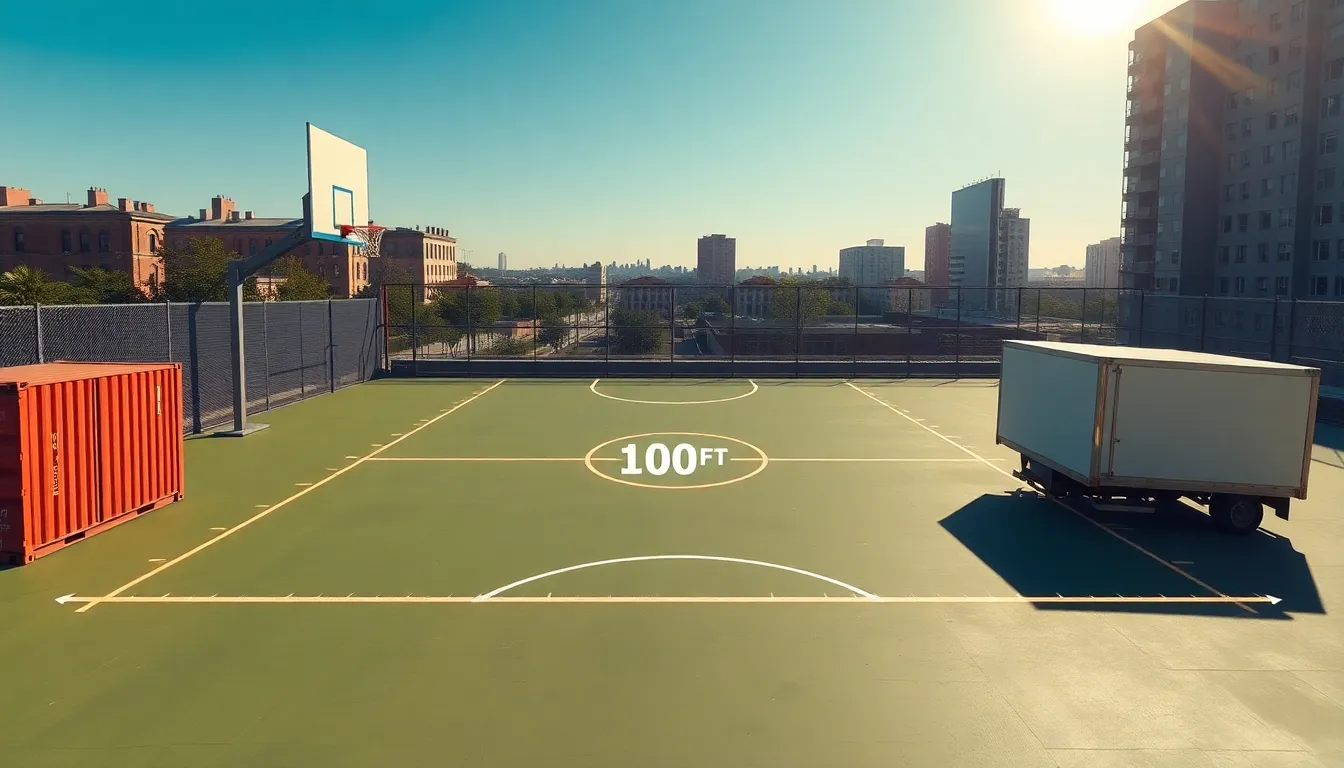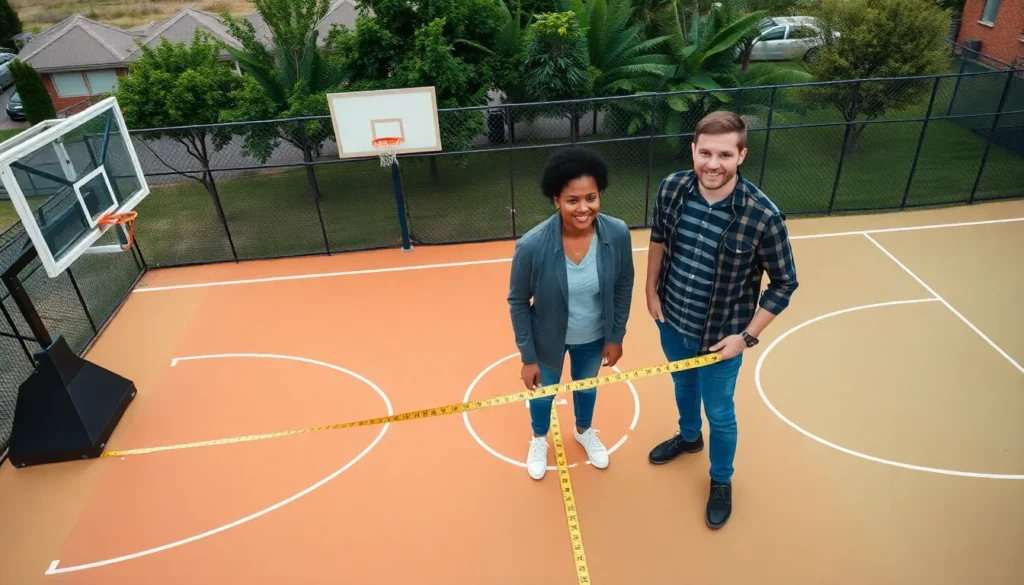Table of Contents
ToggleWhen it comes to measuring distances, 100 feet might seem like just a number, but it holds significance in various contexts. Whether it’s for construction projects, sports fields, or everyday navigation, understanding how long 100 feet really is can make a difference.
Visualizing this length can be tricky, especially for those who aren’t familiar with feet as a unit of measurement. To grasp the concept better, one can compare 100 feet to familiar objects or spaces, making it easier to comprehend its true scale. In this article, we’ll explore the many ways to visualize and appreciate the length of 100 feet, helping readers gain a clearer perspective.
Understanding Feet and Its Measurement
Feet serve as a crucial unit of measurement in various applications. Recognizing its significance enhances understanding of lengths like 100 feet.
What Is a Foot?
A foot is a unit of length in the imperial system, equivalent to 12 inches or approximately 0.3048 meters. It’s commonly used in the United States for measuring height, distance, and various construction elements. A foot relates to the human body’s foot size, contributing to its intuitive use in everyday measurements.
Common Uses of Feet in Measurement
Feet find application in numerous fields, including:
- Construction: Contractors utilize feet to specify dimensions of buildings, rooms, and materials.
- Sports: Athletes’ heights and field dimensions are often cited in feet, such as the height of basketball players or the length of football fields.
- Navigation: Aerial and maritime navigation frequently uses feet to denote elevation and depth, ensuring clarity in altitude and water levels.
- Real Estate: Property listings often include square footage, allowing potential buyers to gauge space effectively.
Understanding feet and its practical applications cultivates a better grasp of length measurements, particularly 100 feet.
Visualizing 100 Feet

Understanding 100 feet can improve through practical examples and comparisons. Familiar references make this measurement easier to visualize.
Examples of 100 Feet in Real Life
- Basketball Court: A full basketball court measures 94 feet long. 100 feet surpasses this length.
- Shipping Containers: A standard shipping container is typically 40 feet long. Two to three containers lined up represent about 100 feet.
- Tennis Court: The length of a regulation tennis court is 78 feet. Therefore, 100 feet exceeds this measurement by over 28 feet.
- City Blocks: In urban areas, a city block often ranges from 200 to 400 feet long. Thus, 100 feet represents a quarter to half of a city block.
- Large Vehicles: Many moving trucks, such as 18-wheelers, can measure around 70 feet in total length. Combining one and a half trucks offers a visual approximation of 100 feet.
Comparisons with Other Measurements
- Inches: 100 feet equals 1,200 inches. Grasping how many inches fit in this distance aids in visualization.
- Meters: 100 feet converts to approximately 30.48 meters. This equivalence helps international readers relate to the length.
- Yards: 100 feet equals about 33.33 yards, making it roughly the size of a football field from the end zone to the 30-yard line.
- Miles: 100 feet is 0.0189 miles. Recognizing this fraction enhances comprehension when considering larger distances.
- Height Reference: An average adult might stand about 5.5 to 6 feet tall. Thus, it would take about 17 to 18 adults stacked on top of each other to equal 100 feet.
Conversion to Other Units
Understanding the conversion of 100 feet to other measurement units enhances its practical applications across various fields. Here are key conversions to consider:
How 100 Feet Relates to Meters
100 feet equals approximately 30.48 meters. The precise conversion factor is 1 foot equals 0.3048 meters. This relationship helps in contexts such as international sports and scientific applications, where metric measurements are standard.
Converting 100 Feet to Yards
100 feet translates to about 33.33 yards, as there are 3 feet in a yard. This conversion finds relevance in sports like football and golf, where yardage is common. Converting feet to yards easily aids in understanding distances in these recreational settings.
Practical Applications of Knowing 100 Feet
Understanding the measurement of 100 feet proves valuable in various everyday scenarios and in specific sports or activities. This knowledge aids in planning, visualization, and effective communication of distances.
Everyday Scenarios
100 feet frequently appears in practical contexts. For instance, knowing this length helps determine safe distances when setting up outdoor events, such as festivals or community gatherings. Homeowners may use this measurement for landscape design, ensuring proper spacing between trees or garden features. Additionally, 100 feet can serve as a guideline for maintaining safe distances from hazards, such as electrical wires or busy roadways.
In urban planning, understanding 100 feet assists in organizing city blocks or defining property lines. For example, a standard city block often spans around 330 feet, making 100 feet an easy reference for estimating distances to destinations. Similarly, visualizing 100 feet in relation to everyday objects, like cars or street signs, aids residents in navigating their neighborhoods more efficiently.
Importance in Sports and Activities
In sports, the significance of 100 feet becomes apparent in various disciplines. For example, the regulation length of a baseball outfield fence can be approximately 300 feet, where knowing 100 feet assists players in gauging distances during gameplay.
In track and field, a 100-foot sprint is common in practice sessions, allowing athletes to refine their techniques. When measuring distances for long jump and triple jump events, 100 feet facilitates athletes’ preparation for competition.
Furthermore, in golf, understanding 100 feet aids players in estimating the length of shots on the course. Given that one yard equals three feet, knowing that 100 feet is about 33.33 yards helps players make informed decisions about club selection and swing techniques.
Overall, practical applications of 100 feet encompass various everyday scenarios and play a vital role in the realm of sports, emphasizing its importance in making accurate estimations and enhancing performance.
Understanding the length of 100 feet opens up a world of practical applications. Whether it’s for planning construction projects or navigating sports fields, this measurement plays a crucial role. By relating 100 feet to familiar objects and distances, individuals can easily grasp its significance in everyday life.
This measurement isn’t just a number; it serves as a vital reference point across various fields. From urban planning to athletic performance, knowing how to visualize and utilize 100 feet enhances decision-making and communication. Embracing this understanding can lead to better outcomes in both personal and professional contexts.




